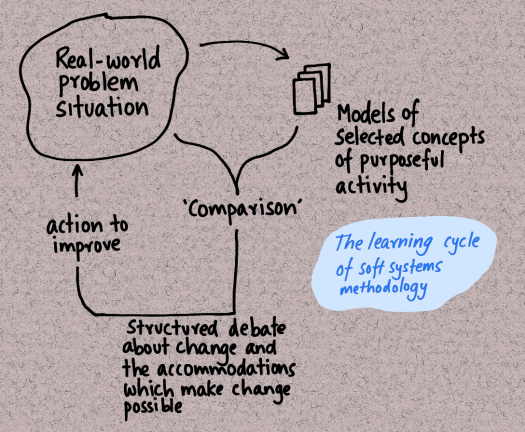
We know we have to change things - but how?
A naive approach is to think that there is an engineering solution to everything.
Buy new software, change machinery, institute a new form or process and everything will fall into place and get better.
That approach assumes that business systems fit together like Lego blocks and swapping a new one in or moving them around will fix the problem.
It's simply a question of knowing what systems we want.
We can then list out the options we have, model alternatives and then select the best one based on objective criteria - simple.
There's just one problem.
The chances are that the people involved want different things.
The thing that the accountants see as an issue is different from how engineers would put the situation which is vastly different from the vision of the CEO and shareholders.
And, because its much easier to see things from our point of view, the decisions that get made say more about power and influence than impact and improvement.
Soft systems methodology (SSM), a programme of action research carried out by Professor Peter Checkland at Lancaster University, is an approach that helps us cut through such situations and have a structured debate about the problem situation and what we can do to improve it.
The principle that underlies SSM is that the one thing that we see in all real-world problems is that people are trying to take purposeful action.
Take carbon reductions, for example.
No one in any organisation these days would argue that it's not better to be sustainable, reduce energy and emissions, and act in a more socially responsible way.
Why don't we do more then?
The engineers blame the accountants for stopping projects.
The accountants point the finger at the CEO's decision to limit costs.
The CEO points to the priorities of shareholders and the desperate need to meet quarterly numbers and support the stock price.
There are no solutions to such problem situations.
Instead, SSM teaches that there are accommodations - things we can do that reconcile conflicting interests.
It does not mean that everyone is satisfied - but it is a position that we can all come to that allows us to move forward and take action.
And that's done through a structured learning cycle as shown in the figure.
We take a real-world situation, create models that describe a set of activities that enable purposeful action in that situation and compare them.
We use these models to talk to each other and see different points of view and figure out what accommodations we can make.
Then - we can take action to improve the situation.
But it doesn't end there. This is a learning cycle - which means we can go around the loop forever, or at least as long as we're still in business.
And it's more complex - because we still need to think about culture and politics - that adds more layers to our analysis.
The thing is that real-life problems that involve people, their opinions and time aren't simple to solve.
Let's not pretend that they are - then we might start to make some real progress.
Read more posts at Karthik-Suresh.com or connect with me on LinkedIn.